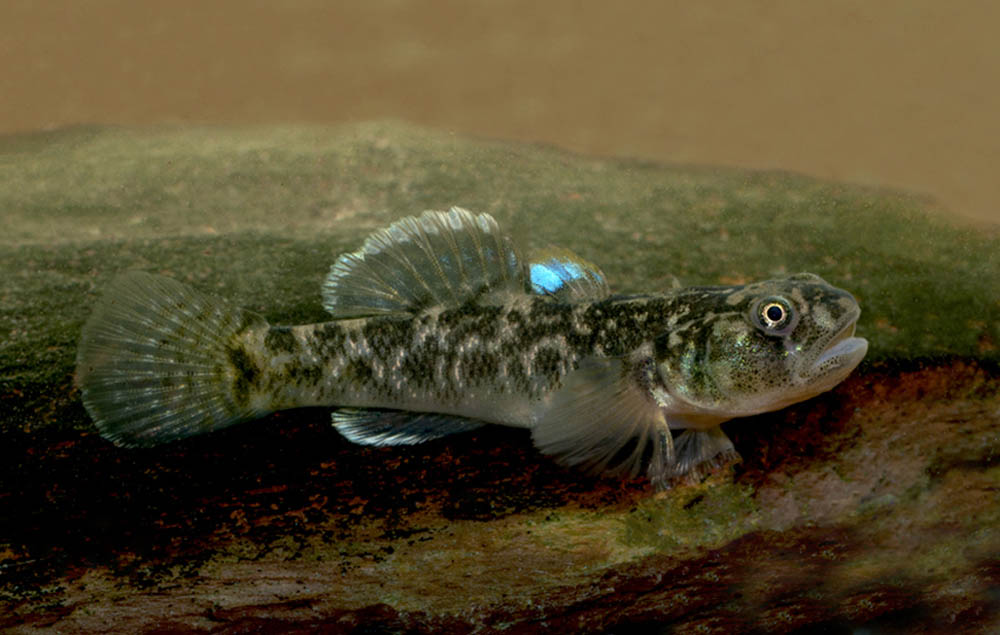Photo – Gunther Schmida
Introduction –
A care sheet is to help you keep and breed your small gobies to be able to keep them going and have spares to give to your friends. The Finke Goby is on the Northern Territory threatened species list as vulnerable because of its restricted distribution. It is restricted to the Finke River near Alice Springs in the Northern Territory. The brood stock were collected under the provisions of a NT Fisheries License.
General Information about habitat and the goby.
The Finke River is usually a series of water holes and flows after periods of heavy rain. It has nine species of fish recorded from its waters. It flows through the Macdonald Ranges near Alice Springs then in a South Easterly direction where it eventually disappears into the desert. It is reported to be one of the oldest still running rivers on the planet.
The waters in the Finke River can be quite cool with temperatures between about 10 Deg C to over 30 Deg C depending on the seasons. The salinity ranges from pure fresh to saltier than the sea.
pH from 7.5 to 8.5
Carbonate hardness from 80 ppm to 240 ppm
Hardness from 40 ppm to 240 ppm
This makes the fish within this old desert river great survivors generally able to tolerate broad ranges in their water quality. The Fink Goby grows to approximately 5.5 cm, it is a bottom dwelling fish and after swimming it slowly sinks back to the bottom because it has no swim bladder. Their natural diet is reported to be aquatic insects, small crustaceans and algae.
When the fish are larger they are relatively easy to determine the sex differences. The males have larger heads and a slender body, their fins are bigger and more colourful than the females. The females also have more plump bodies.
Captive husbasndry techniques
I will suggest a small aquarium of approx 50 litres to 60 litres, about 60 cm X 30 cm X 30 cm is ideal. An aquarium this size will house six to 12 Finke Gobies comfortably. A simple effective filter would be an under gravel style of filter with approx 3 to 4 cm of fine shell grit as a substrate. The shell grit will help maintain a bit of water hardness. It is also adviseable to have some places for them to hide. Small logs, some rocks and large leaves arranged to create small caves and crevices.
Water quality management for most small aquariums is similar. Put a heater in the aquarium to keep the temperature about 20 to 25 Deg C, keep the hardness about 100 to 200 ppm, keep the carbonate hardness over 60ppm.
Foods to offer your gobies can be flake but not recommended as a staple diet. It is suggested to offer thawed frozen foods, blood worms, brine shrimp or prepare your own frozen foods with a home blender or mincer. All these foods should be offered sparingly to prevent fouling the water. A good frozen prepared food is equal portions of fish fillet, prawns and peas. All ingredients are frozen in small chunks then passed through a hand crank mincer with a 2 or 3 mm plate. The result can be mixed with about 100 grams of calcium ascorbate per one kg and frozen into thin one centimeter slabs. Pieces can be broken off and fed when required. This prepared food is good for many omnivorous forage fishes.
Breeding notes
This small forage fish breeds easily in the aquarium. Just put a few pair in a 60 cm aquarium, feed plenty of small live foods until the females are plump. Place some flat srones, small sticks, large dead leaves and a few pieces of PVC water pipe 15mm diameter cut to 15cm lengths. Put the openings in a place where you can observe the inside of the pipe. Males will get broad in the head and become more colourful eventually the female will go into the pipe with him and they weill lay eggs on the inside of the pipe. The eggs stick to the wall of the pipe and will be guarded and fanned by the male until they hatch. You can then move the adult fish to another aquarium and continue to feed the small ones finely minced recipe the same as the adults are fed.
They will grow quite quickly. Give them to your friends with their story. Do something to raise awareness of conservation issues. If you sell some of these think about sharing the cash with the Traditional Owner of the Finke River near Henbury. Peter Abbott of Wallace Rockhole via Alice Springs. He could use the cash for the landcare work in the area. The waterholes along the Finke River are degraded by feral donkeys and camels.
If you want to keep these little fishes long term you should breed them often, they only live for two years probably less.
References and further reading
Allen G.R., Midgley S.H. and Allen M. (2002) “Freshwater Fishes of Australia”. ANGFA database – http://db.angfa.org.au



